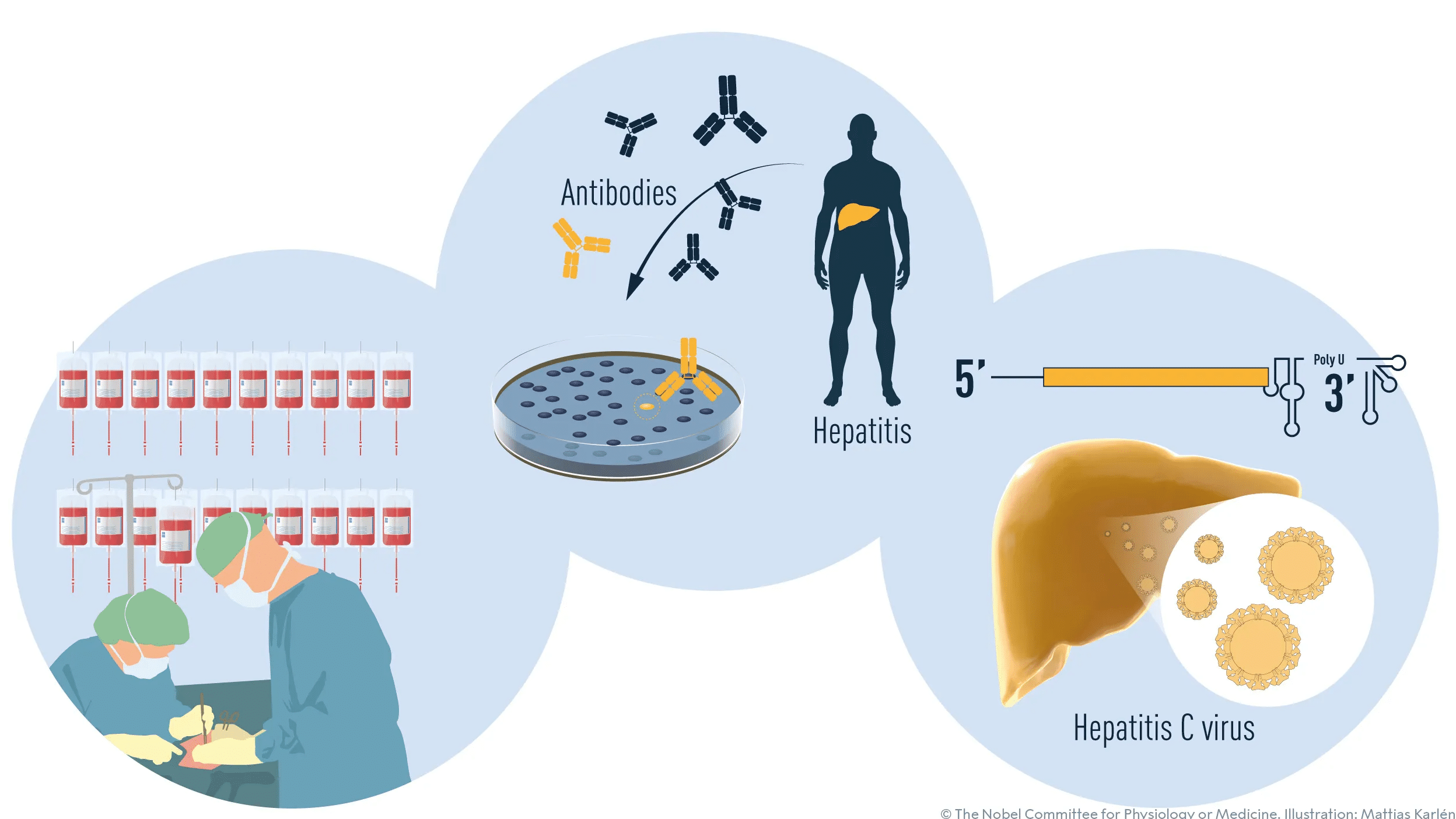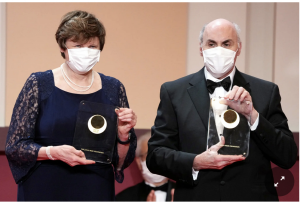US-British trio Harvey J Alter, Michael Houghton, and Charles M Rice were jointly announced as the winners of the Nobel Prize in Physiology or Medicine 2020 by the Nobel Foundation on Monday for their discovery of the Hepatitis C virus.
The three received the honour for their “decisive contribution to the fight against blood-borne hepatitis, a major global health problem that causes cirrhosis and liver cancer in people around the world,” the jury said while announcing the names.
How was Hepatitis C virus discovered?
For years, the novel virus remained elusive as scientists, including Harvey Alter, at the US National Institutes of Health kept hunting for it. The Hepatitis A virus discovered in 1976, as well as the Hepatitis B virus, were not the causes for the “unexplained cases”, which kept infecting patients with chronic hepatitis when they received blood transfusions.
Also Read | Linus Pauling, only person to be awarded two undivided Nobel Prizes
“Alter and his colleagues showed that blood from these hepatitis patients could transmit the disease to chimpanzees, the only susceptible host besides humans. Subsequent studies also demonstrated that the unknown infectious agent had the characteristics of a virus. Alter’s methodical investigations had in this way defined a new, distinct form of chronic viral hepatitis,” a press release from the Nobel Foundation read.
This illness then came to be known as “non-A, non-B” hepatitis.
Also Read | Nobel Prize for Medicine 2020 awarded to Harvey J Alter, Michael Houghton, Charles M Rice
It was around this time Michael Houghton, working for the pharmaceutical firm Chiron, started to work on isolating the genetic sequence of the virus. Houghton and his colleagues collected DNA fragments from nucleic acids from an infected blood sample.
“On the assumption that antibodies against the virus would be present in blood taken from hepatitis patients, the investigators used patient sera to identify cloned viral DNA fragments encoding viral proteins”, the press statement read.
Following this, one positive clone was found in the sample and upon further research, Houghton and his co-workers found that the clone was derived from a novel RNA virus belonging to the Flavivirus family. They named it the Hepatitis C virus.
Also Read | In an era of team science, are Nobels out of step?
After the discovery, the medicine world wondered if the virus could alone cause hepatitis. To find the answer, Charles M Rice, a researcher at the Washington University in St. Louis, along with other groups working with RNA viruses, started studying it.
At the end of his study, Rice found that the newly discovered virus could indeed cause hepatitis by itself and could cause the unexplained diseases.
According to the World Health Organisation, around 70 million people have been infected with the Hepatitis C virus globally, which causes about 400,000 deaths each year.
The three winners will receive the Nobel prize sum of 10 million Swedish kronor (about $1.1 million).






